System for Deterministic Modeling of CPU Scheduling Algorithms Project
VerifiedAdded on 2020/05/04
|7
|766
|203
Project
AI Summary
This project presents a Java-based system for deterministically modeling various CPU scheduling algorithms. The system covers key scheduling criteria such as arrival time, burst time, completion time, turnaround time, waiting time, and response time, offering a comprehensive analysis of algorithm performance. The implemented algorithms include First-Come, First-Served (FCFS), Shortest Job First (SJF) (both preemptive and non-preemptive versions), priority-based scheduling, Round Robin (RR), multilevel queue scheduling, and multilevel feedback scheduling. The project addresses the challenges associated with I/O burst handling and the management of jobs on I/O devices. The solution incorporates the use of Eclipse IDE and Java Collections ArrayList for data storage and manipulation. References to relevant operating system and data structure textbooks are also included.
1 out of 7
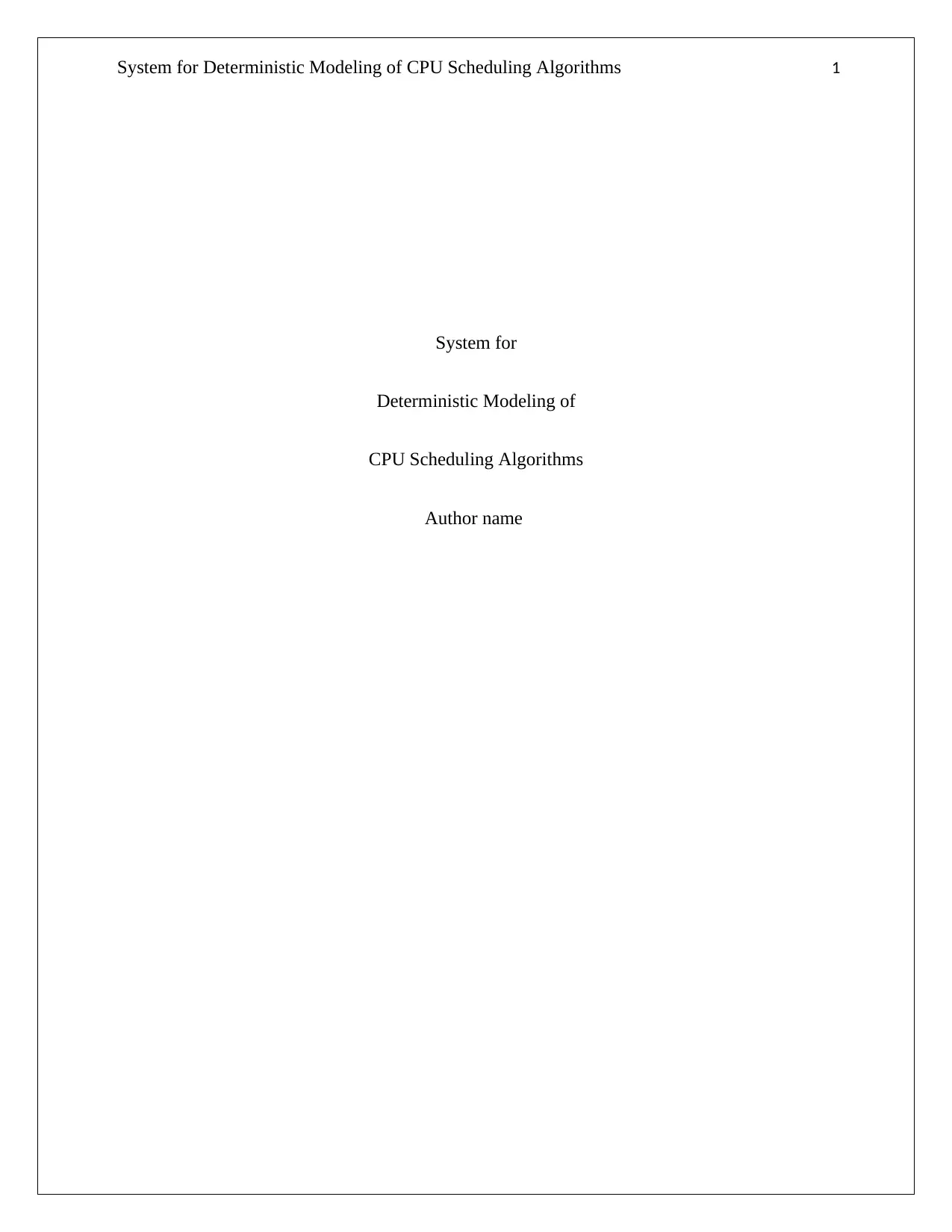
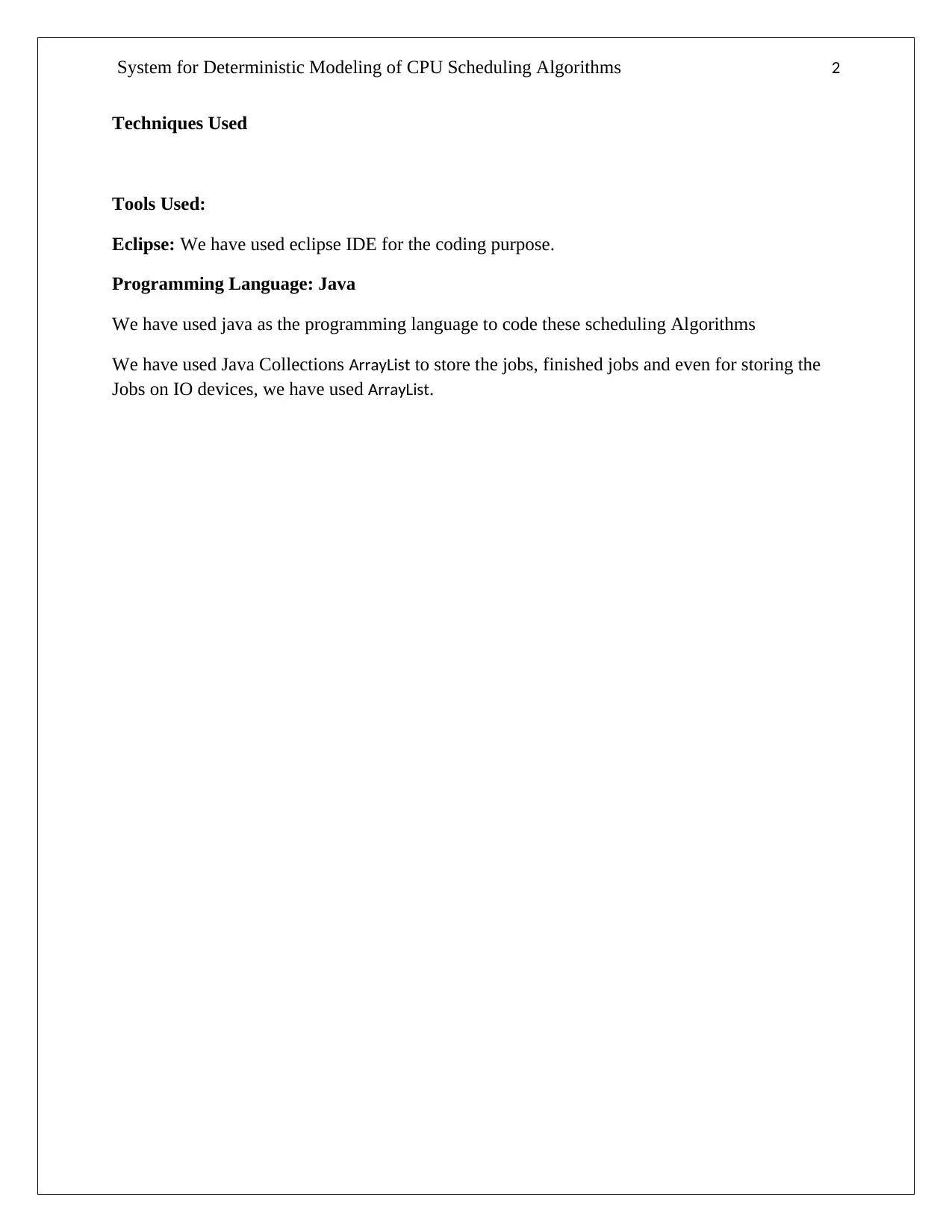
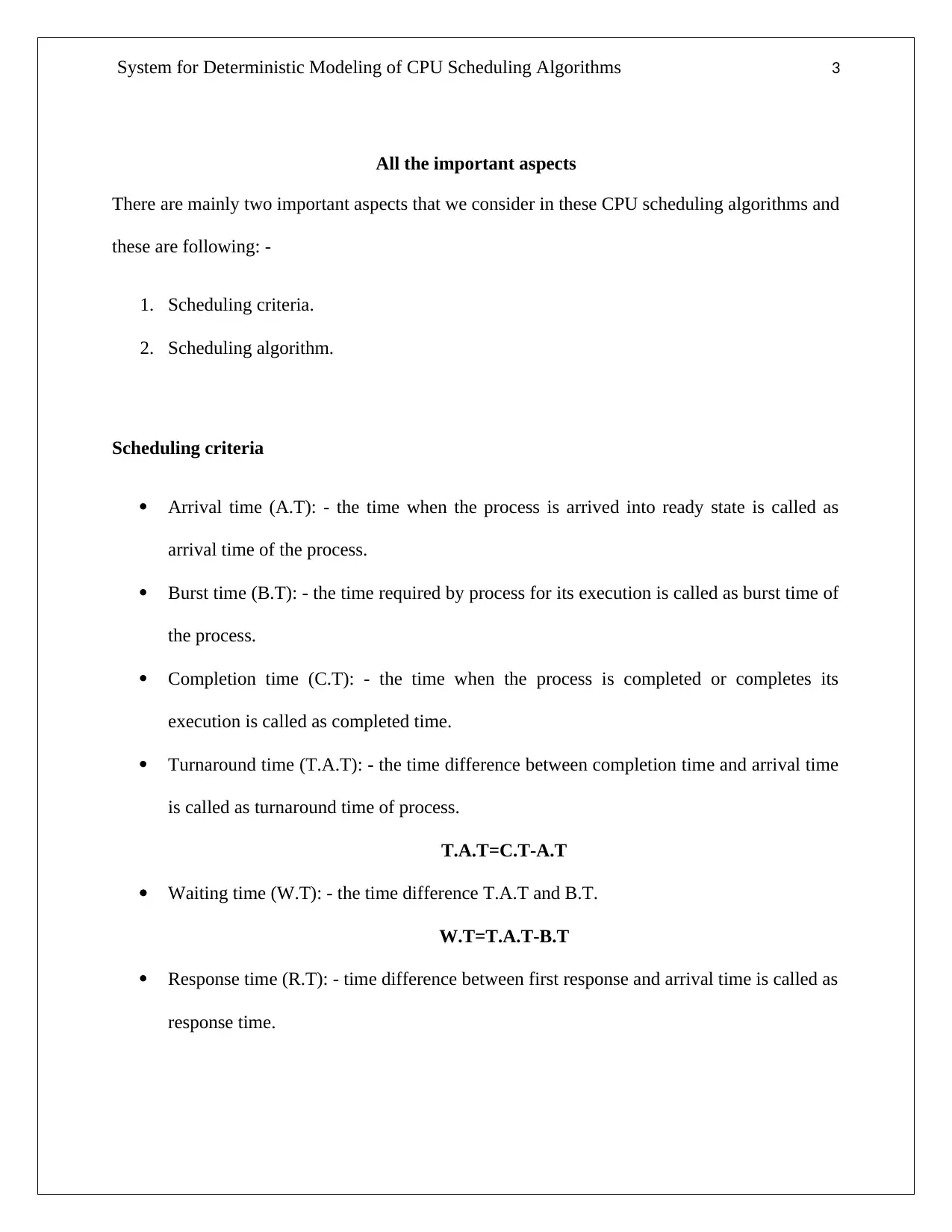

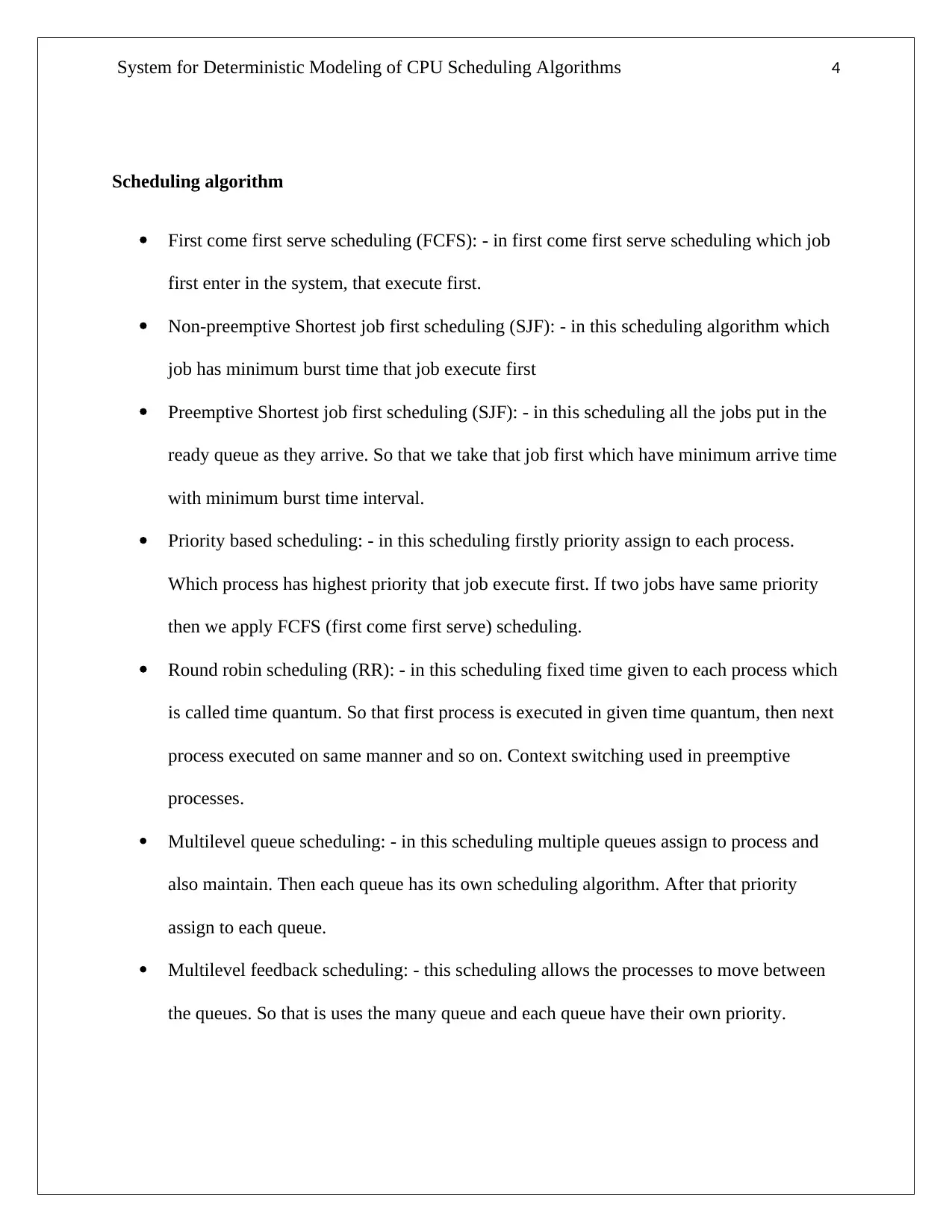
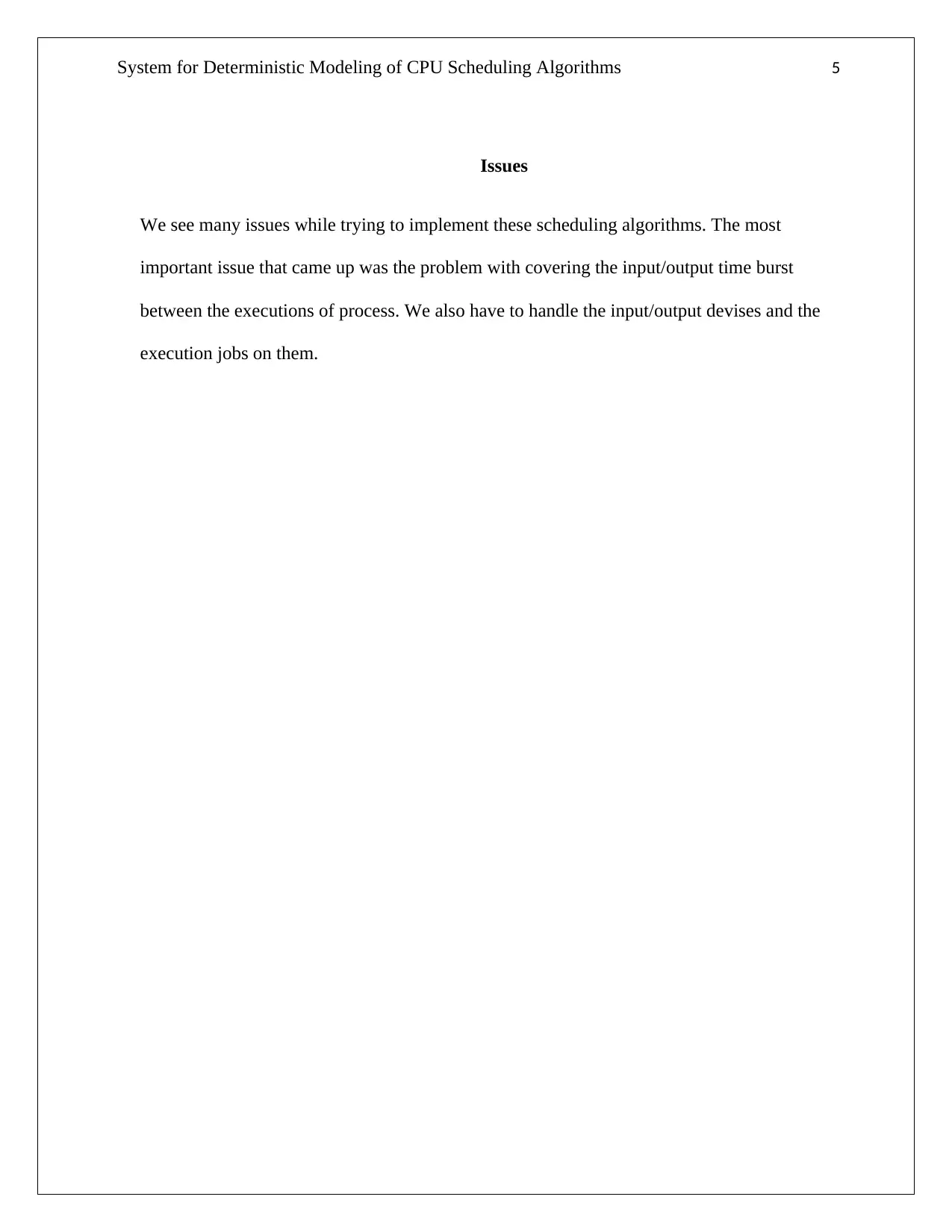
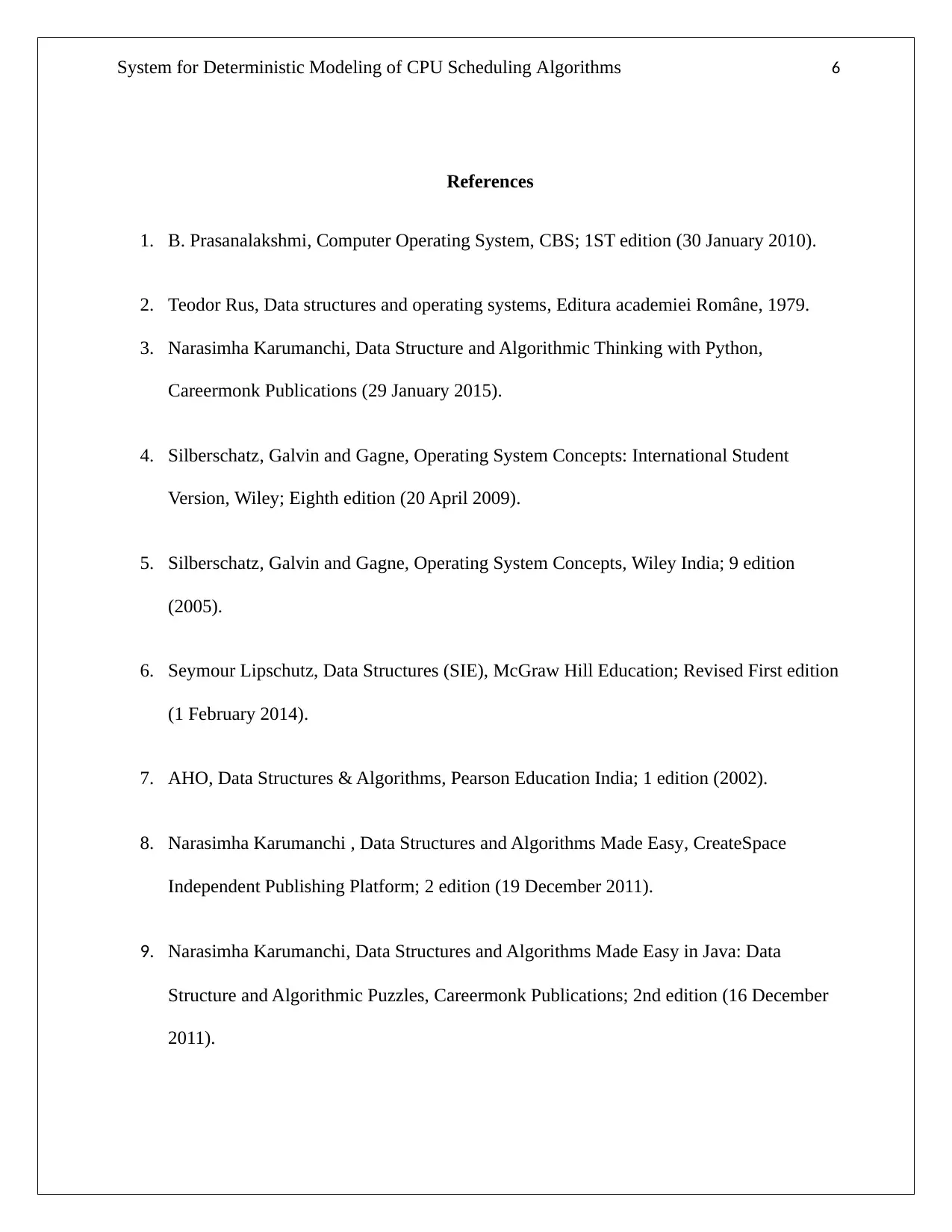
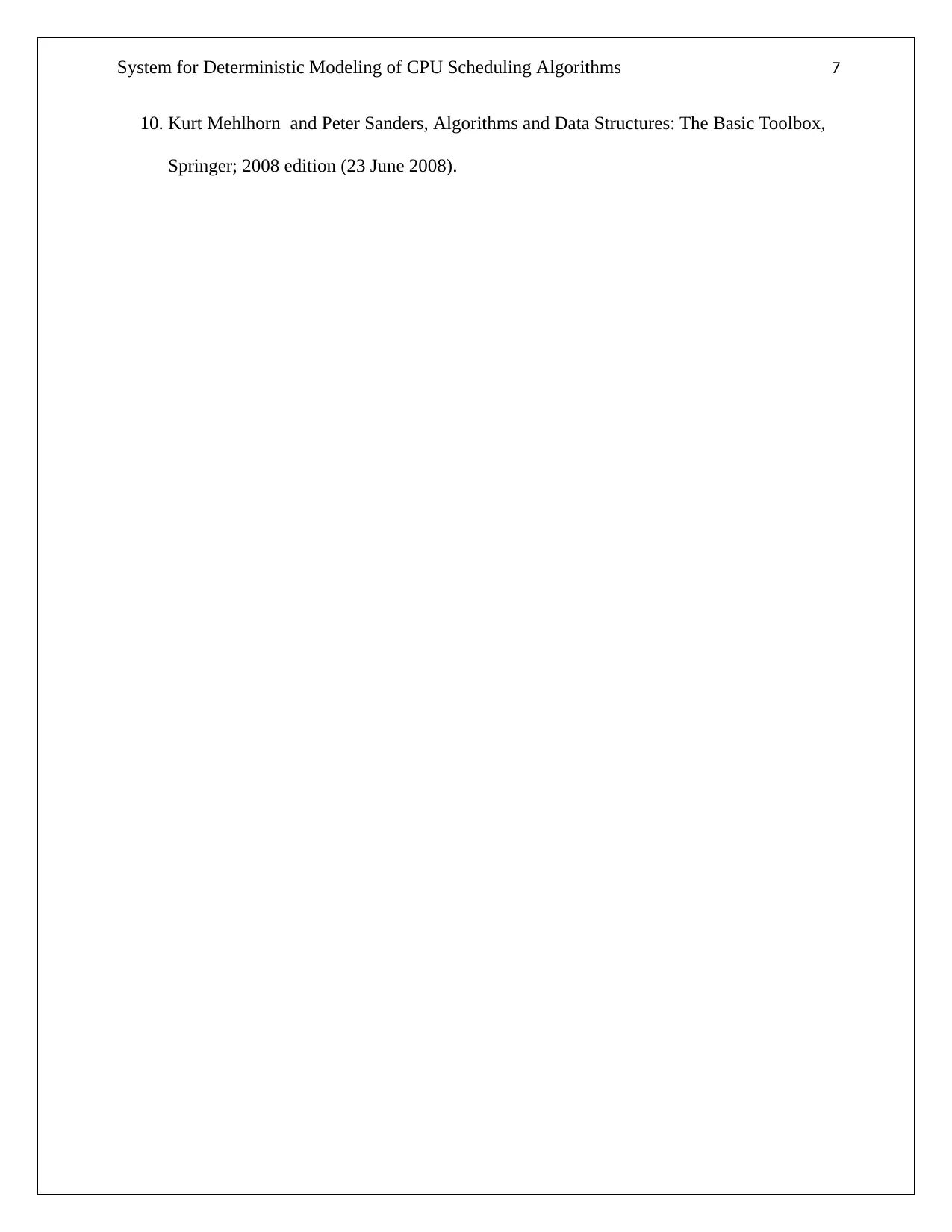




![[object Object]](/_next/static/media/star-bottom.7253800d.svg)